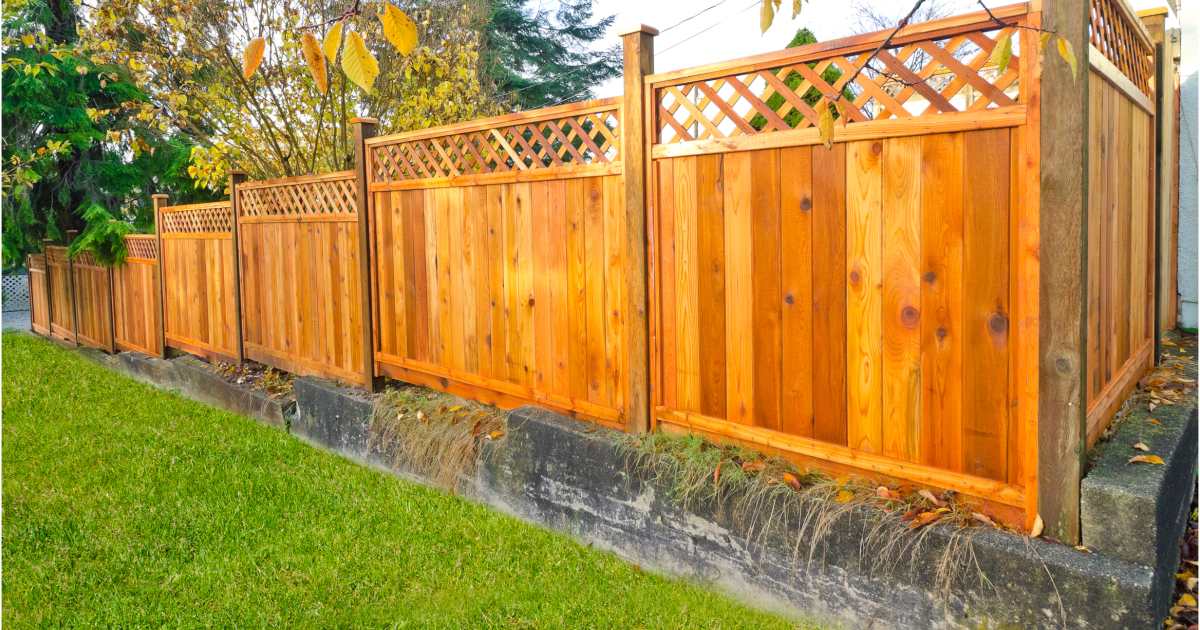All Categories
Featured

Whether it's solid winds, rainfall, snow, or intense warmth, climate conditions can progressively damage your fence, leading to costly repair services or replacement. There are several actions you can take to protect your fence from weather-related damages and expand its life expectancy.
- Select the Right Product. The kind of product your fencing is made from plays a substantial duty in just how well it will hold up against weather. Some products are naturally much more immune to damage than others. For instance:
Wood Fences: While traditional and stunning, wood can be prone to wetness, rot, and insects. However, pressure-treated wood or cedar can use far better resistance to these issues. Plastic Fences: Plastic is very immune to moisture, rot, and bugs. It also stands well to harsh sunlight and hefty rain. Steel Fences: Wrought iron or aluminum fences are durable and can withstand a range of weather. They can, nonetheless, experience rust in time, especially if not effectively covered. Composite Fences: Made from a mixture of wood fibers and plastic, composite fences are extra immune to weather-related damage contrasted to typical wood fencings. Choosing the best product for your area's climate is the initial step in shielding your fence from climate damage.
- Seal or Stain Wooden Fences. Wood fences are especially prone to harm from wetness, UV rays, and temperature level variations. One of the most reliable methods to protect your wood fencing is by applying a safety sealant or stain. These items aid:
Avoid Water Damages: Sealers create a waterproof obstacle, protecting against moisture from permeating right into the wood and creating mold, rot, or mold and mildew. Safeguard Against UV Damage: An excellent discolor or sealant will certainly likewise block hazardous UV rays from the sunlight, which can cause wood to dry out, split, and tarnish in time. Protect the Fence's Look: Regular discoloration aids keep the all-natural charm of the wood and expands its lifespan. It's recommended to reapply the tarnish or sealant every 1-- 2 years to maintain your fencing in excellent problem.
- Install a Barrier for Wind Defense. Strong winds can trigger considerable damages to your fencing, especially if it is weak or high. Wind can flex or damage wooden panels, loosen fence articles, or even create the entire fence to collapse. Mounting a windbreak-- such as growing hedges, hedges, or mounting a mesh barrier-- can assist secure your fence from high winds.
Additionally, you can reinforce the posts with concrete or metal dental braces to give added security and protect against moving or leaning.
- Trim Overhanging Branches. Dropping branches can damage panels or damage the fencing articles, leading to pricey repair services. Keeping the branches reduced back reduces the risk of branches damaging off and creating damages to the fencing.
- Regular Assessments and Upkeep. Executing routine upkeep and evaluations is vital to capturing possible issues prior to they intensify. After a hefty storm, examine your fencing for any signs of damage, such as loose panels, leaning messages, or broken areas. Taking care of little problems prior to they become bigger ones can assist prolong the life of your fencing.
In addition, cleansing your fencing regularly to remove dust, particles, or mold and mildew can help preserve its look and honesty. For wooden fencings, delicately pressure clean the surface to get rid of built-up gunk, and for vinyl fencings, use a moderate cleaning agent to clean any type of stains.

- Guarantee Appropriate Water Drainage. Water damage is just one of the most usual weather-related concerns that impact fences. Poor water drainage can bring about standing water around your fencing posts, which can cause the posts to rot or weaken over time. To stop this, make sure the ground around your fence inclines away from the posts. You might likewise desire to set up drainage solutions such as French drains or crushed rock at the base of the articles to avoid water from pooling.
- Apply a Safety Coating to Metal Fencings. Metal fencings, such as those made from iron or steel, are highly resilient yet can be prone to corrosion otherwise effectively maintained. Applying a safety finish or paint that is particularly developed for steel can aid avoid corrosion and corrosion. Make sure to check the fencing periodically for any kind of indications of rust, and address it instantly by sanding and painting the impacted locations.

Conclusion. Your fencing is an important financial investment, and shielding it from weather-related damages will certainly help guarantee that it remains to offer its objective for many years to find. By picking the ideal products, consistently keeping your fence, and taking actions to secure it from the components, you can reduce weather-related damages and extend its life expectancy. Whether you're dealing with solid winds, hefty rain, or the extreme sunlight, these straightforward steps can go a lengthy means in preserving the condition and appearance of your fence, conserving you time and cash in the long run.
Latest Posts
Claim Farewell to Scrubbing: Bath Fitter's Simple and easy Washroom Upgrade
Published Apr 19, 25
1 min read
The Advantage of NAPA AutoCare? Montclare Auto Repair Has You Covered
Published Apr 19, 25
2 min read
Preventative Maintenance at Montclare Auto Repair: Extend Your Vehicle Running Smoothly
Published Apr 19, 25
2 min read
More
Latest Posts
Claim Farewell to Scrubbing: Bath Fitter's Simple and easy Washroom Upgrade
Published Apr 19, 25
1 min read
The Advantage of NAPA AutoCare? Montclare Auto Repair Has You Covered
Published Apr 19, 25
2 min read
Preventative Maintenance at Montclare Auto Repair: Extend Your Vehicle Running Smoothly
Published Apr 19, 25
2 min read